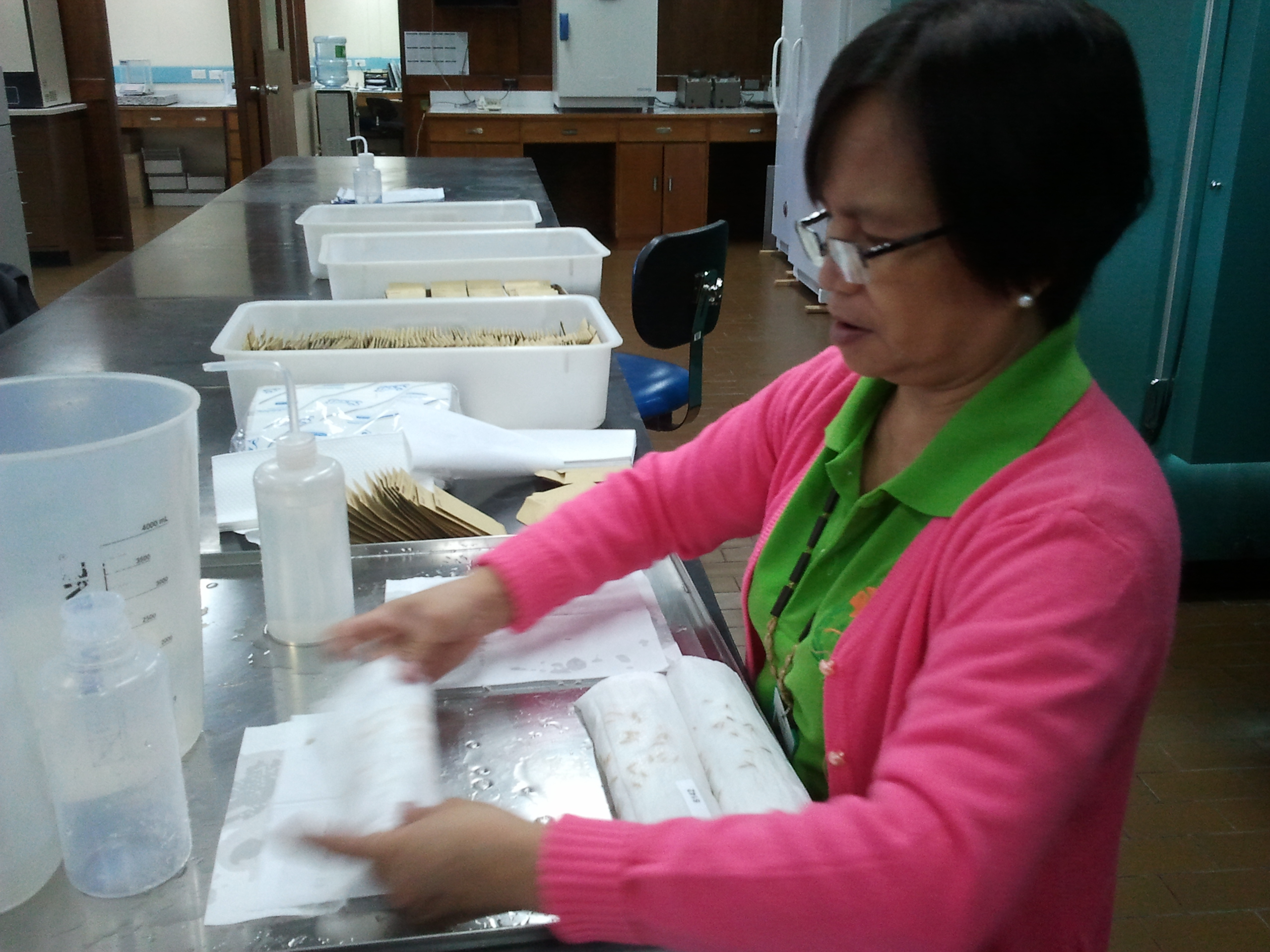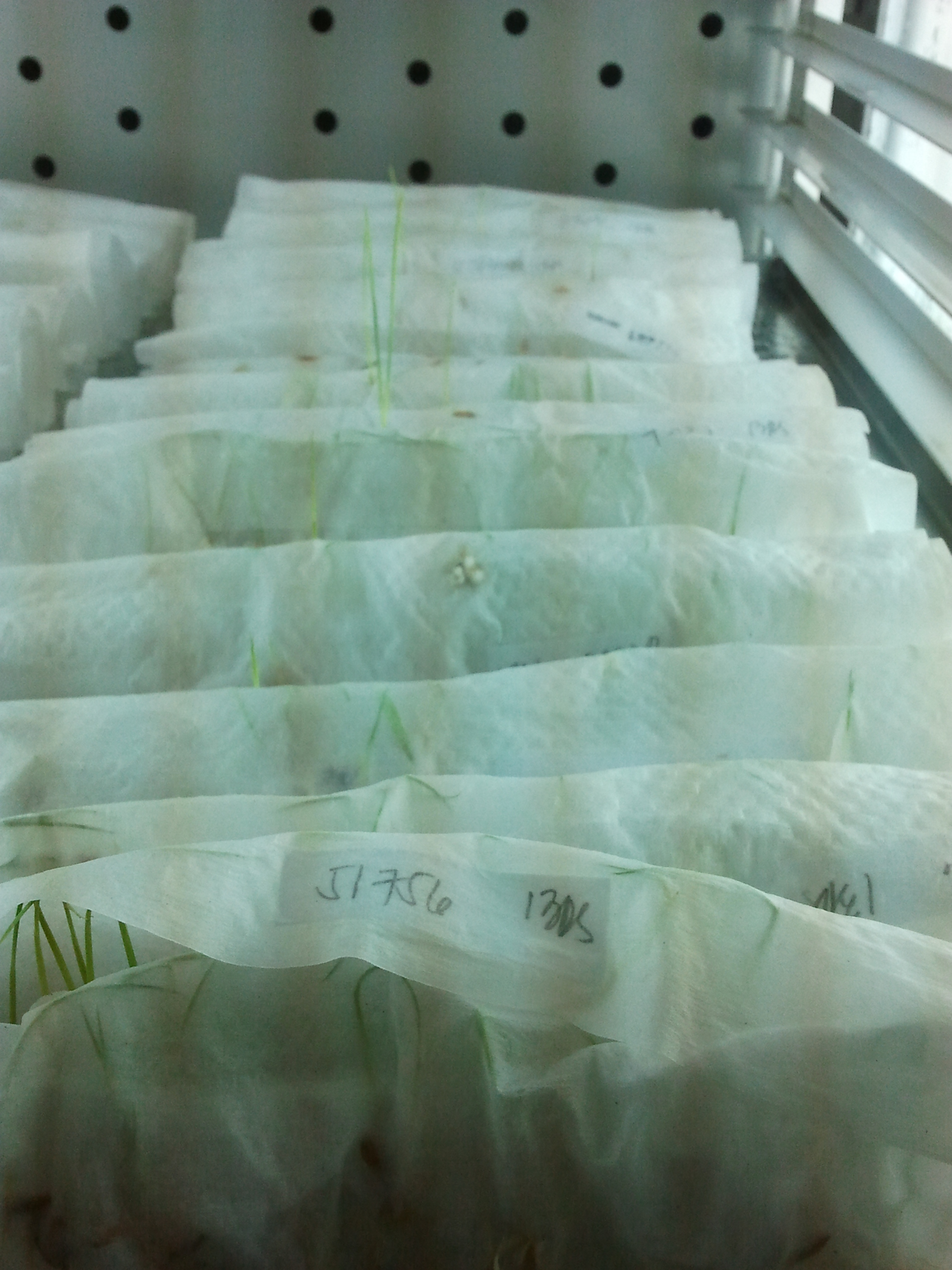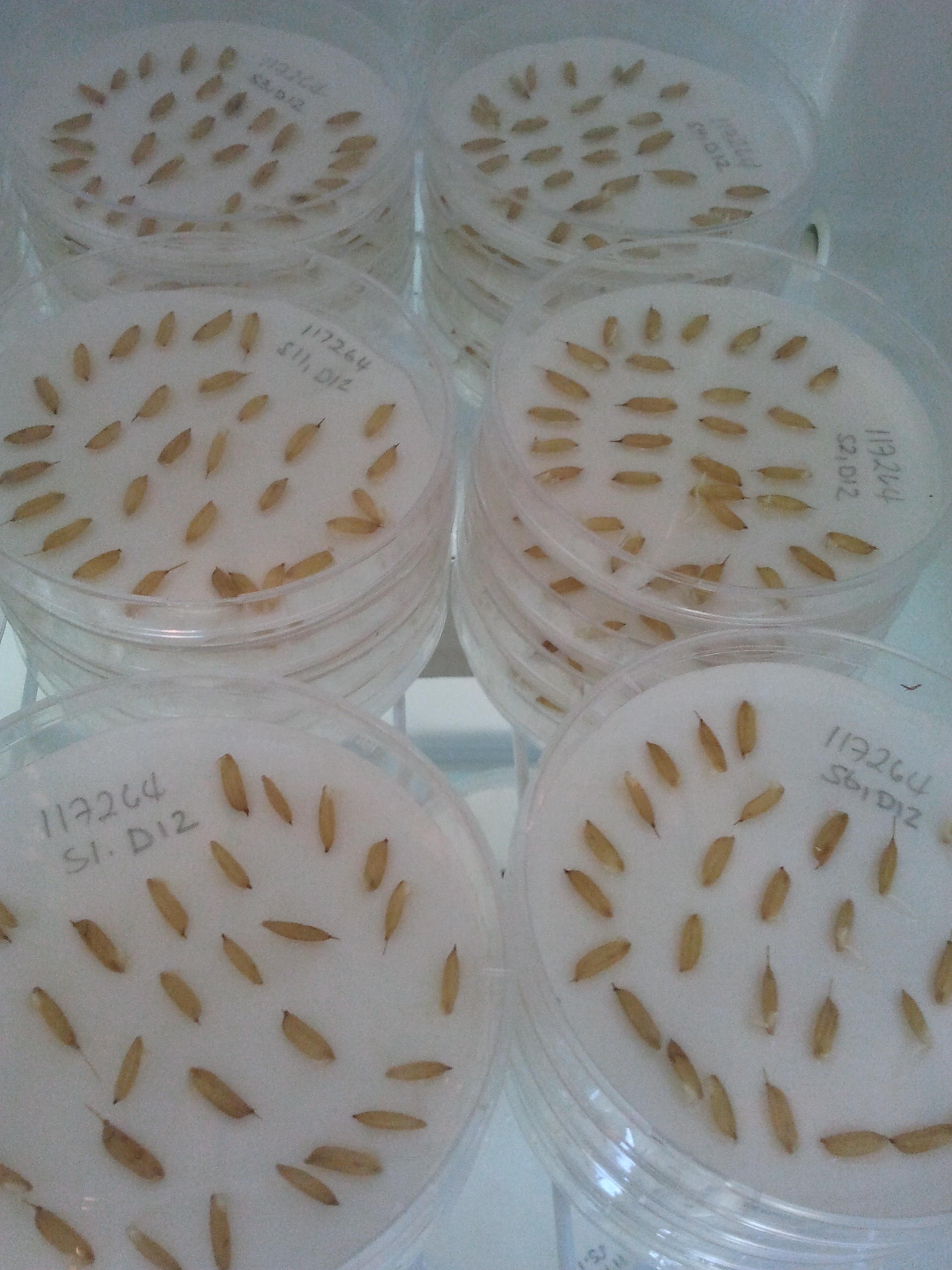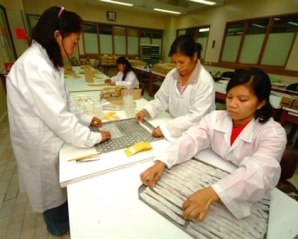Viability of cultivated rice genetic resources
Contributors to this page: T.T. Chang Genetic Resources Centre-IRRI, Los Baños, Philippines (Ruaraidh Sackville Hamilton, Ken McNally, Flora de Guzman, Renato Reaño, Soccie Almazan, Adelaida Alcantara, Elizabeth Naredo); WARDA, Cotonou, Benin (Ines Sánchez); UPLB-University of the Philippines at Los Baños (Teresita Borromeo).
|
Contents: |
|
Laboratory methods
Type of test
- Standard germination test (modified ISTA).
- Apply tetrazolium test to seed that fail to germinate, to determine whether seeds are non-viable or dormant.
Number of seeds and replicates
- Initial viability: if sufficient seed is available use 100 seeds with 2 replicates.
- Active collection: 100 seeds with 2 replicates.
- Base collection: 50 seeds with 2 replicates.
- Repeat if the difference between the two replicates exceeds the maximum difference expected from a binomial distribution at a probability of 2.5%.
Pre-treatment
- Break dormancy at 50oC for ten days for newly harvested seed or seven days for seed removed from storage.
- Equilibrate at room temperature for 2-3 days.
Media
- Use moist paper for standard tests.
- Use Petri dishes lined with moist paper where the standard test gives unreliable results.
 |
 |
 |
|
Preparation of rice seeds for germination testing in moist paper at IRRI (photo: Fiona Hay, IRRI) |
Rice germinating in moist paper at IRRI (photo: Fiona Hay, IRRI) |
Rice germination in Petri dishes at IRRI (photo: Fiona Hay, IRRI) |
Temperature/ Humidity
- 30oC, 100% RH.
Light
- 12/12 hours light/dark.
Duration of test
- 7-28 days.
Others
- Count the number of normal and abnormal seedlings seven days after germination.
- If necessary take a second reading at 14 days.
- Test hardness of remaining ungerminated seeds.
- If still hard, dehull and place again in the germination chamber.
- If they still do not germinate, apply tetrazolium test.
Monitoring intervals
- Base collection - every ten years.
- Active collection - every five years.
Recording information during viability testing

Seeds are germinated to check its viability and recorded |
The following information should be recorded for each testing step:
- Germination date (date of germination).
- No. Tested (number of seed tested).
- Germination % in replication 1 (%).
- Germination % in replication 2 (%).
- % germination mean (system-calculated mean for the % germination).
- Germination retest (germination % of the re-tested sample).
- Accession (list of accessions tested).
- Date counted (first count at 7 days and second count at 14 days).
- Normal seedling (seedlings that are free from decay, have well-developed primary root systems, have well-developed and intact coleoptiles).
- Abnormal seedling (seedlings not well developed).
- Assumed dormant seeds (hard but non-germinated seeds).
- Dead seeds (rotten seeds).
- Germination % (the percentage of normal seedlings).
Describes the recommended monitoring methods to assure minimum viability and quantity of seeds in storage.
Methods
Determine which samples require testing:
- Newly received or harvested samples, and samples that have been in storage for the prescribed monitoring interval (5/10 years in active/base collection) since their previous viability test.
- Exclude samples with less than the minimum required quantity of seeds (60g): they will be scheduled for regeneration even without germination test.
-
If the number of samples to be tested exceeds current testing capacity:
- Prioritize accessions with the lowest germination rate at the previous test.
- Schedule a continuous series of tests until backlog has been processed.
- When no samples remain to be tested, calculate and schedule the next due testing date.
- Prepare the seeds. Locate and remove the seeds from cold storage. Allow to equilibrate to room temperature before opening.
- Do the germination test following the guidelines (see viability testing procedure).
- If the % germination has declined to 85% of the initial germination, mark the accession in the database as unavailable for distribution and schedule for urgent regeneration.
Monitoring frequency
Recommends the minimum quantity and minimum viability of seeds below which they need to be regenerated.
Critical quantity
- Each time seeds of an accession are removed from storage, for whatever purpose, re-weigh and update the computerized inventory before replacing the accession back in storage.
- Use barcoded labels with computerized inventory management system linking the balance to the database.
- If the quantity remaining is less than 60g (twice the amount needed for a regeneration planting) mark the accession in the database as unavailable for distribution and schedule for regeneration.
Critical germination level
- 85% of initial viability.
Recording information during routine monitoring
The following information should be recorded for each step:
- Accession ID (ID of accession).
- Seed Lot ID (ID of this sample of the accession).
- Crop season (year and season the seed was harvested).
- Store – temporary, active bulk, active pre-pack, base, primary safety backup, secondary safety backup (type of storage and packing for this sample).
- Species (O. glaberrima or O. sativa).
- Germination % (2 replications) (germination % - separate values for each replication; new record for each test).
- Germination test No. (number of seed per replicate used for testing germination %).
- Germination date (date of germination test; new record for each test).
- Seed amount units – grams, number of packets (units used to record the amount of seed of this sample).
- Seed amount (amount of seed in store; new record for each update).
- Inventory date (date the amount was last updated; new record for each update).
Comments
- No comments found






Leave your comments
Post comment as a guest